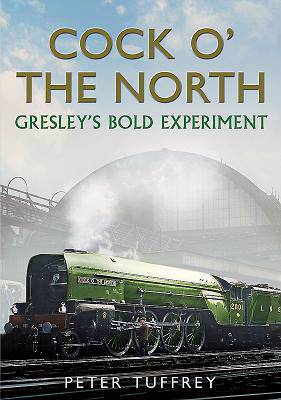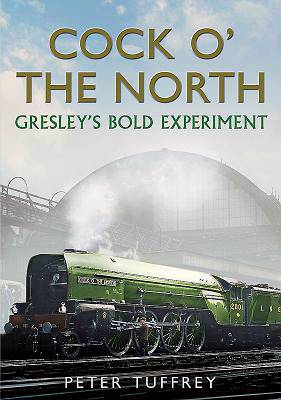
- Retrait gratuit dans votre magasin Club
- 7.000.000 titres dans notre catalogue
- Payer en toute sécurité
- Toujours un magasin près de chez vous
- Retrait gratuit dans votre magasin Club
- 7.000.0000 titres dans notre catalogue
- Payer en toute sécurité
- Toujours un magasin près de chez vous
41,95 €
+ 83 points
Format
Description
On 22 May 1934 a zenith of locomotive construction in the UK was reached when an enormous new locomotive entered traffic for the London & North Eastern Railway Company. The impressive engine was P2 Class no. 2001 Cock o' the North and it was painstakingly erected to the designs of eminent locomotive engineer H.N. Gresley (later Sir) at the company's sprawling Doncaster Works.Cock o' the North was equipped with number of new and experimental features and this created quite a stir in the highly critical railway world and with the wider general public. These features included; Kylala-Chapelon (Kylchap) double blastpipe and chimney, Lentz poppet valves and rotary cam valve gear, A.C.F.I feedwater heater, V-shaped cab front, streamlined steam passages and a 50 sq. ft firebox grate area. No. 2001 also had a 2-8-2 or 'Mikado' wheel arrangement and, while it was not the first engine in Britain to have such configuration (the Gresley P1 Class locomotives of 1925 were the pioneers), Cock o' the North was the first engine intended for use on express passenger traffic to be built as a 'Mikado'.This book is the first one to feature the entire history of Cock o' the North as a single subject.With detailed research and a remarkable selection of photographs it examines and illustrates many aspects of the locomotive including: the name derivation, construction, trial runs, trial tests, the controversial rebuilding by Gresley's successor, Edward Thompson, the involvement in the Balby Bridge crash, and final withdrawal from service.Locomotive developments at home and abroad during the first half of the 20th century are also chartered as well as Nigel Gresley's rise from Great Northern Railway Company Locomotive Superintendent to LNER Chief Mechanical Engineer. Having understood Gresley's motivation behind building the locomotive, readers are then armed with enough information to ask themselves whether his bold experiment of building the largest steam passenger locomotive Britain has ever seen was a success and achieved the intentions of its creator.
Spécifications
Parties prenantes
- Auteur(s) :
- Editeur:
Contenu
- Nombre de pages :
- 224
- Langue:
- Anglais
Caractéristiques
- EAN:
- 9781781556832
- Date de parution :
- 05-04-19
- Format:
- Livre broché
- Format numérique:
- Trade paperback (VS)
- Dimensions :
- 173 mm x 246 mm
- Poids :
- 566 g

Les avis
Nous publions uniquement les avis qui respectent les conditions requises. Consultez nos conditions pour les avis.






